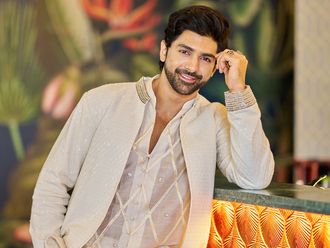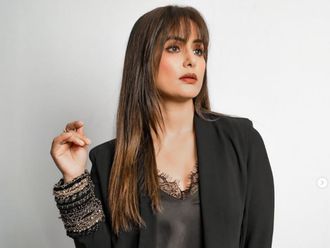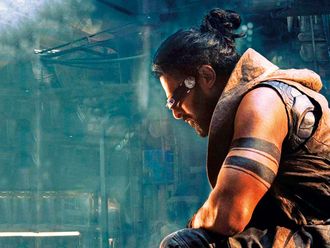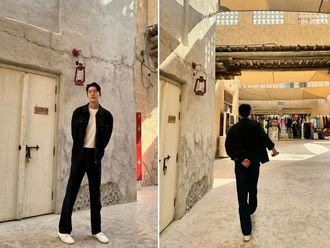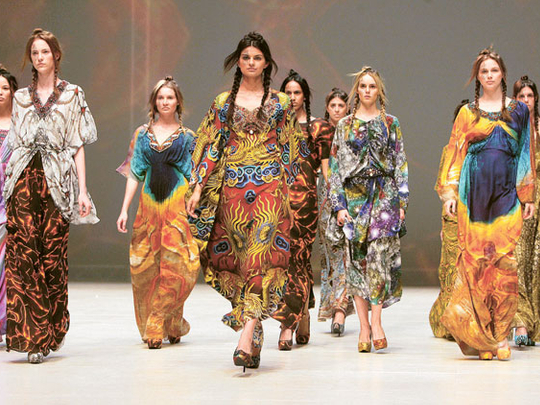
Rossini
As a brand, Rossini has been in the UAE for many years, mostly known for their leather goods including bags and shoes. Fashion came much later for the Italian label, spearheaded by president Samir Antoine Chaker, who took the last bow on the fourth day of the DFW spring-summer 2012 presentations.
When the show began, the scarlet in the logo blazed across the giant screen and then spilled over onto the massive catwalk as the models sashayed down in bright red numbers, each with a glittery accent: There's one on the shoulder, two on the chest, one in the form of a necklace, a belt, on the midriff.
Minimal lighting was the order of the day and spotlights followed each model. Staying true to its heritage, every model marched in with an accessory, mostly glittery clutches since the collection was largely evening wear.
Red dresses then gave way to animal prints, then black, then blue, green and then red again. The cocktail dresses clung so tightly to the models' svelte frames that it becomes clear Rossini was going for the jugular in trying ooze sex appeal out of them. Unfortunately, many of them seemed rather uncomfortable, which was unfortunate, because if models can't do it, then there's little hope for us mere ordinaries.
Despite the many short dresses, my personal favourite was a flowy black one-shoulder gown with perhaps the least glitter in the entire collection.
— David Tusing, Deputy tabloid! Editor
Dabya
Qatari designer Dabya was inspired by butterflies in her collection, thus the flowy, wingy dresses. Some looked like night gowns, in an attractive sense — sexy with all the lace, tulle, and silk chiffon in ivory, green, and fuchsia.
Perfect for everything from Penelope Cruz at a red carpet or a wedding party, day or night.
Although the dresses were tight, they were designed in a way that was comfortable to sit and walk in because of a slit or a short dress under the long, airy fabric. The look gave class and confidence to the models — I've seen them in earlier shows, but never with this sensual visage.
— Roda Al Tayer, Staff Reporter
Shrekahnth
The designer chose a dark and dramatic route to underline his apocalyptic vision. Models in untidy loose braids and swathed in kaftans with glowing volcanic ember prints erupted onto the catwalk, while robes imprinted with primitive tribal faces showing the evolution of civilisations were also shown.
Digitised DNA patterns that underline the birth of humans were also woven into his robes. Though Shrekahnth, stocked at S*uce and United Designers, is known for loose flowing kaftans, short dresses were a part of his showcase.
"I want to enter the European markets. Apart from the Gulf regions, I am now selling in Russia and Ireland. I want them to feel as if my clothes are perfect for lounging around in a beach resort," said Shrekahnth.
Though some of the robes looked overloaded with print patterns, the majority of his 30-piece collection was wearable. But the real statement pieces were the towering shoes that perfectly matched the patterns on the robes.
— Manjusha Radhakrishnan, Senior Reporter
Jaya Misra
Just when you thought DFW had trimmed down the shows dominated by Indian traditional outfits, enter Jaya Misra.
Before her presentation, the Kolkata-based designer introduced us to a rather verbose reel of the richness of Indian culture, weaves and architecture — her principal inspirations. What came next was anarkalis (long flowing tunics) in fuschia, blue and ivory with intricate embroidery on the sleeves.
"I love all things Indian. You can wear it for a wedding, Diwali or any occasion. And I was also trying to fit in everything — traditional suits and ready-to-wear clothes," said Misra.
She may find takers among Indian traditionalists, but as far as introducing new cuts and drapes, Misra didn't bring much to the table.
— M.R.



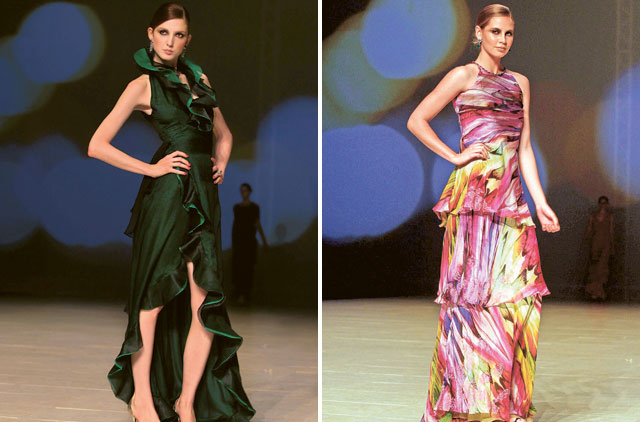
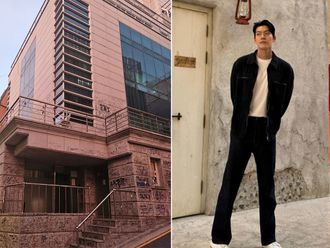
_resources1_16a30b3d57a_small.jpg)



